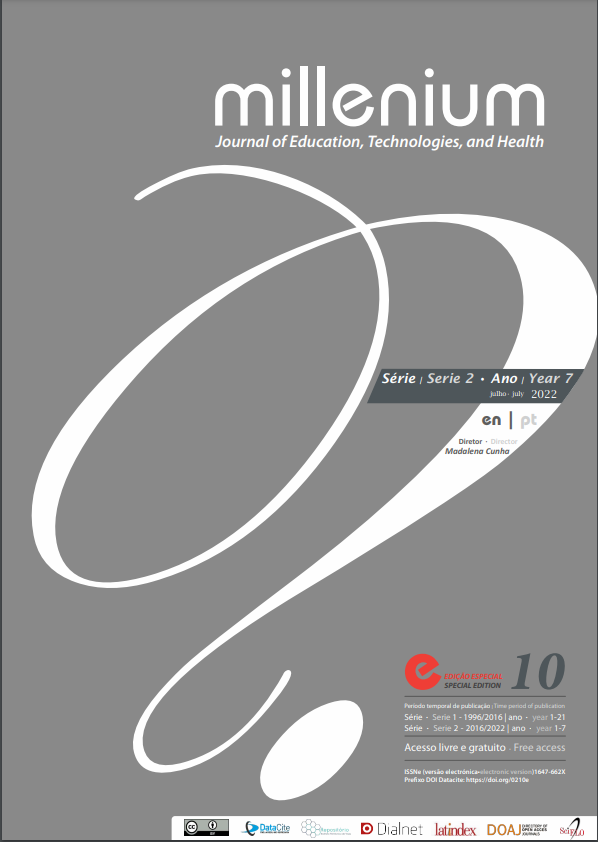Evaluación de impacto ambiental de la gestión de residuos en una producción de mostrador basado en el enfoque ECV
DOI:
https://doi.org/10.29352/mill0210e.25165Palabras clave:
economía circular, mobiliario, evaluación del ciclo de vida, reciclajeResumen
Introducción: El consumismo ha provocado un aumento de los problemas ambientales y, por tanto, como soluciones sostenibles, deben ser la prioridad a la hora de diseñar nuevos productos o servicios. La evaluación del ciclo de vida (ECV) es una de las herramientas analíticas más importantes disponibles para elegir la mejor decisión en lo que respecta a la sostenibilidad. Objetivo: El enfoque de este estudio fue aplicar un ECV a la gestión de una producción de un panel para bancos. Los escenarios de gestión de residuos estudiados fueron vertedero (práctica actual) y reciclaje de residuos. El panel está formado por una capa cerámica sobre un sustrato de panel laminar, formado por glassliner y PVC, que está destinado a ser resistente al agua, arañazos e impactos. Los residuos generados por la producción de paneles son revestimientos de vidrio y plásticos y cerámicas de PVC. El estudio actual del escenario de gestión de residuos fue el vertido (práctica) y el reciclaje de residuos.
Métodos: Se siguió la metodología LCA y se eligió el método EPD 2018 disponible en el software SimaPro para cuantificar los impactos ambientales de la gestión de residuos. Las categorías de impacto ambiental estudiadas fueron eutrofización, calentamiento global, oxidación fotoquímica, agotamiento de la capa de ozono, agotamiento abiótico y acidificación.
Resultados: Nuestros resultados indujeron a que los dos desechos plásticos son los principales contribuyentes a la acidificación, la eutrofización y el calentamiento global. Sin embargo, para la oxidación fotoquímica y la escasez de agua, el residuo del componente cerámico es el principal contribuyente. Comparando los dos escenarios, reciclaje de residuos en todas las categorías de impacto ambiental, analizados en comparación con vertedero.
Conclusión: Se pudo observar que el reciclaje de los residuos de la producción de paneles trae mejoras en los impactos ambientales en todas las categorías analizadas.
Descargas
Citas
Asokan, P., Osmani, M., & Price, A (2009). Assessing the recycling potential of glass fibre reinforced plastic waste in concrete and cement composites. Journal of Cleaner Production 17, 821–829. https://doi.org/10.1016/j.jclepro.2008.12.004
Benson, C. H., Barlaz, M. A., Lane, D. T., & Rawe, J. M. (2007). Practice review of five bioreactor/recirculation landfills. Waste Management 27(1), 13–29. https://doi.org/10.1016/j.wasman.2006.04.005
Campos, M., Paulon, V., & Filho, J (2013). Resíduos cerâmicos no município de Pedreira [SP]: Equacionamento e soluções de reciclagem Labor E Engenho, 7(1), 74–83. https://doi.org/10.20396/lobore.v7i1.19
Chislock, M. F., Doster, E., Zitomer, R. A., & Wilson, A. E. (2013). Eutrophication: Causes, consequences, and controls in aquatic ecosystems. Nature Education Knowledge 4(4), 10.
https://www.wilsonlab.com/publications/2013_NE_Chislock_et_al.pdf
Geyer, R., Kuczenski, B., Zink, T., & Henderson, A. (2016). Common misconceptions about recycling. Journal of Industrial Ecology 20(5), 1010-1017. https://doi.org/10.1111/jiec.12355
Heijungs, R., Huppes, G., & Guinée, J. B.. (2010). Life cycle assessment and sustainability analysis of products, materials and technologies. Toward a scientific framework for sustainability life cycle analysis. Polymer Degradation and Stability 95(3), 422-428. https://doi.org/10.1016/j.polymdegradstab.2009.11.010
International Organization for Standardization (2006 a). EN ISO 14040:2006. Environmental management – Life cycle assessment – principles and framework. ISO (eds), Geneva, Switzerland.
International Organization for Standardization (2006 b). EN ISO 14044:2006. Environmental management – Life cycle assessment – requirements and guidelines. ISO (eds), Geneva, Switzerland.
Job, S. (2013). Recycling glass fibre reinforced composites – history and progress. Reinforced Plastics 57(5), 19 – 23. https://doi.org/10.1016/S0034-3617(13)70151-6
Kassim, S. M. (2012). The importance of recycling in solid waste management. Macromolecular Symposia 320(1), 43 – 49. https://doi.org/10.1002/masy.201251005
Laurin, L. (2017). Overview of LCA - History, concept, and methodology. Encyclopedia of Sustainable technologies. Elsevier, 217 – 222. https://doi.org/10.1016/B978-0-12-409548-9.10058-2.
PRé Consultant (2020). SimaPro Software, version 9.1. PRé Consultants. https://simapro.com/
Sadat-Shojai, M., & Bakhshandeh, G. (2011). Recycling of PVC wastes. Polymer Degradation and Stability 96, 404 – 415. https://doi.org/10.1016/j.polymdegradstab.2010.12.001
Silva, L., Silva, M., Brás, I., Domingos, I., Wessel, D., & Ferreira, J. (2021). A life cycle assessment study on a new countertop material. Key Engineering Materials 897, 137-142. https://doi.org/10.4028/www.scientific.net/kem.897.137.
Stichnothe, H., & Azapagic, A. (2013). Life cycle assessment of recycling PVC window frames. Resources, Conservation and Recycling 71, 40– 47. https://doi.org/10.1016/j.resconrec.2012.12.005
Descargas
Publicado
Cómo citar
Número
Sección
Licencia
Derechos de autor 2022 Millenium - Journal of Education, Technologies, and Health

Esta obra está bajo una licencia internacional Creative Commons Atribución 4.0.
Los autores que sometan propuestas para esta revista estarán de acuerdo con los siguientes términos:
a) Los artículos serán publicados según la licencia Licença Creative Commons (CC BY 4.0), conforme el régimen open-access, sin cualquier coste para el autor o para el lector.
b) Los autores conservan los derechos de autor y conceden a la revista el derecho de la primera publicación, se permite la divulgación libre del trabajo, desde que sea correctamente atribuida la autoría y la publicación inicial en esta revista.
c) Los autores están autorización para firmar contratos adicionales separadamente, para la distribución no exclusiva de la versión del trabajo publicada en esta revista (ej.: publicar en un repositorio institucional o como capítulo de un libro), con reconocimiento de la autoría y publicación inicial e esta revista.
d) Los autores tienen permiso y son alentados a publicar y distribuir su trabajo on-line (ej.: en repositorios instituciones o en su página personal) ya que eso podrá generar alteraciones productivas, así como aumentar el impacto y la citación del trabajo publicado.
Documentos necesarios para la sumisión
Plantilla del artículo (formato editable)





